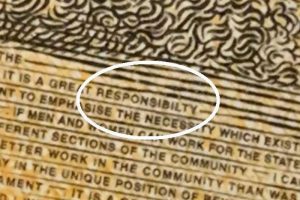Here are some simple steps to disaster free proofreading.
I’ve enjoyed numerous trips to SE Asia in the last few years, and had loads of fun finding typos on signage, menus and brochures. It’s all part of the experience in developing countries where English is not the first language.
Of course your audience will have a very different expectation when they receive communication from you.
Nobody wants to work with a sloppy organisation
When you email, post online or communicate in print, spelling mistakes, poor grammar or formatting can undermine the clarity of your message, and the impression of your brand.
Careful proofing is even more critical when you’re buying print, as reprints waste time and don’t come free.
Do your proof reading somewhere quiet, and wait a while after you’ve created the content. That way you’re less likely to skim over errors because you’re too familiar with the message.
Print out your proof at full size
This is vital, particularly if you’re going to print, and much more accurate than reading on screen.
Then read:
- word-by-word
- with a ruler underneath each line
- aloud
- in reverse order i.e. read point 7 before point 6
Double check these key details
- Pagination
Is the document size, page count and order correct? - Spelling and Grammar
Don’t rely on the spellchecker – it won’t catch many errors, including errors such as their/there, then/than, were/where – anyone who has predictive text on their phone can use their imagination here - Punctuation
Ensure that this is consistent throughout - Contact details
Check all names, addresses, email and web addresses and telephone numbers. Mistakes here are common and can be very costly - Images
Are all images included correct, crisp and appropriately placed? - Fonts
Are they appropriate and consistent?
Fresh eyes will often spot errors that you’ve skimmed over repeatedly
Once you’re satisfied you’ve checked everything, ask one or more friends or colleagues to go through the same procedure.
This post originally appeared in the Australian Businesswomen’s Network blog on January 16, 2014


